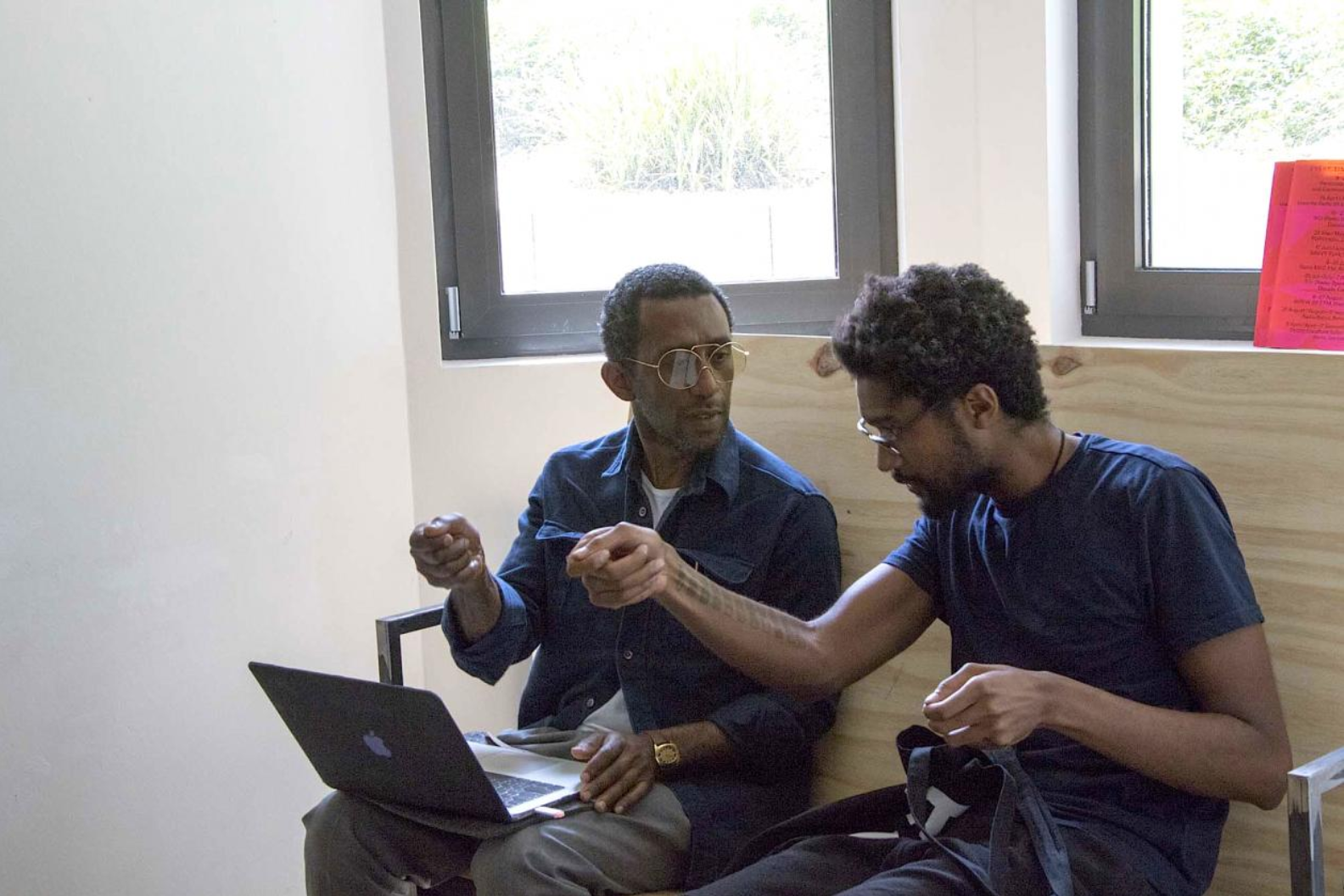
(Leo Asemota & Nástio Mosquito, photo: Anne Wellmer, 2017)
Contemporary Art is able to be or act as an infrastructure as it is inherently ‘iterable’ and revisable. It has not passed into history, as say Modern art, or a classical object. Contemporary Art is of the present in the sense that as a whole it can be consistently re-made to fit the present, and that this changing definition updates the category through a process of scaling (witness the ways that stylistic trends are propagated, rather than occurring as ruptures). (This this in comparison to classical sculptures, which conveyed the fixity and profundity of their fixed iconographic meaning.)
Complicating this of course is the differing ways in which Western art history has categories works from the west and non-west: as temporally-situated and as distributed spatially. (Miwon Kwon, “Questionnaire on the Contemporary, Art Forum, 2009–2010, 13)
This would not be to say that this is necessarily a problem for Contemporary Art. This is its power. And this can be put to use by those wishing to change what the ‘normal’ is. See Leo Asemota & Nástio Mosquito, Portikus, for example, http://www.portikus.de/de/exhibitions/215_215.
However, returning to a different infrastructure through which art’s conditions of possibility are set — the market — and which of course interleave with others such as the means of making a living, or cultural imaginaries, this disruptive characteristic of of Contemporary Art as infrastructure does not delaminate it (to se Benjamin Bratton’s term, The Stack, 2016, 5) it from existing infrastructural and institutional arrangements of power inherently.
It does however offer a way to think about the indeterminacy of Contemporary Art.